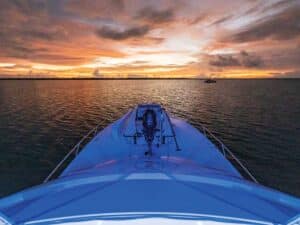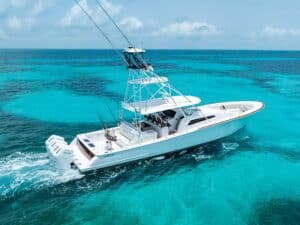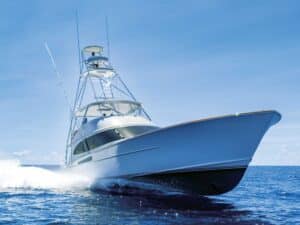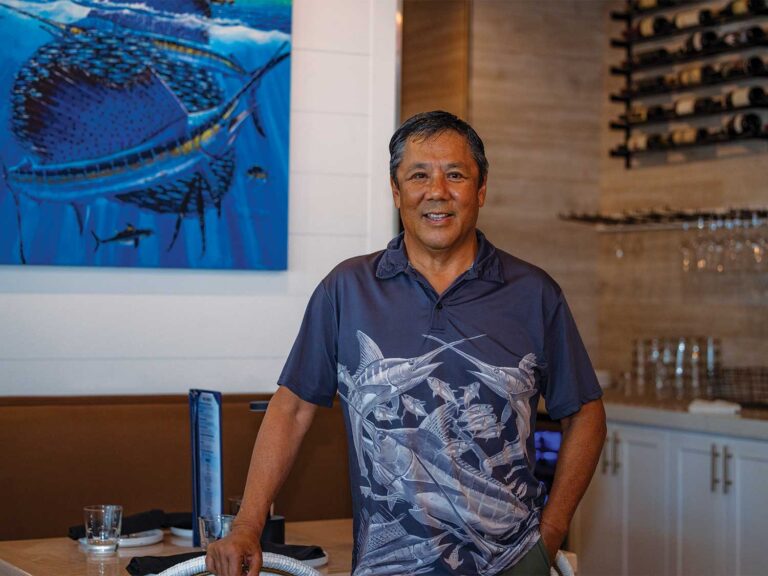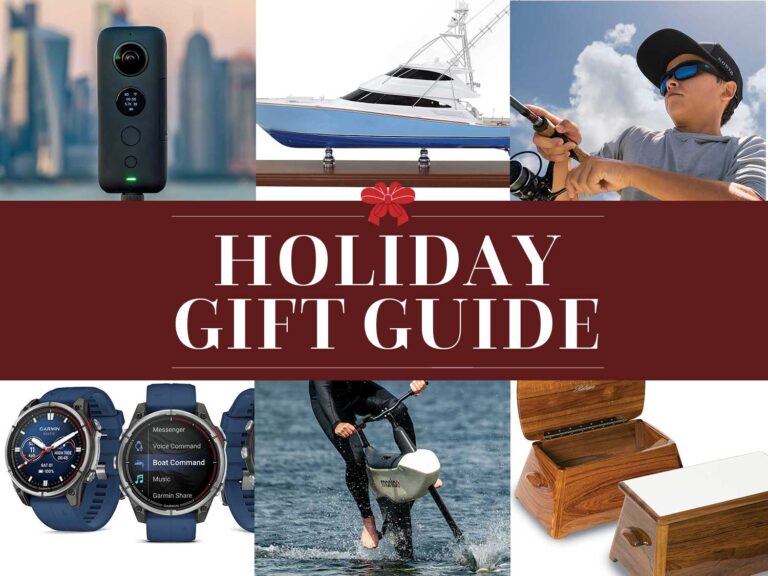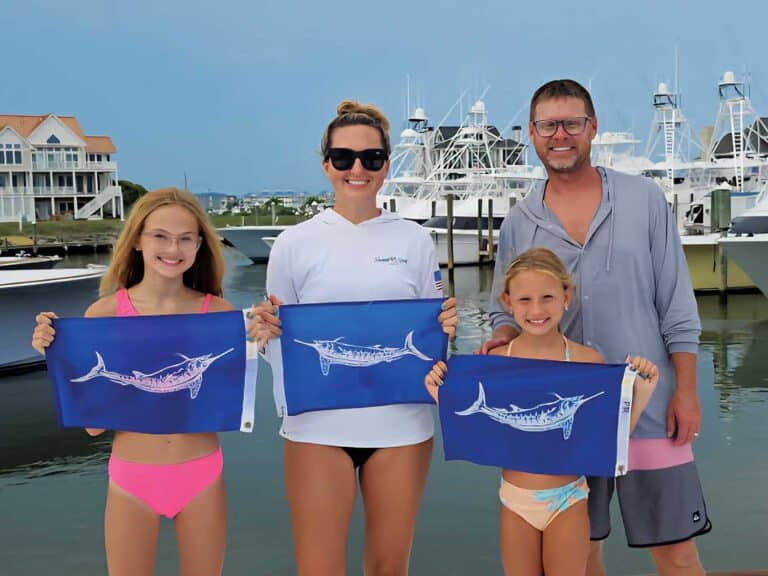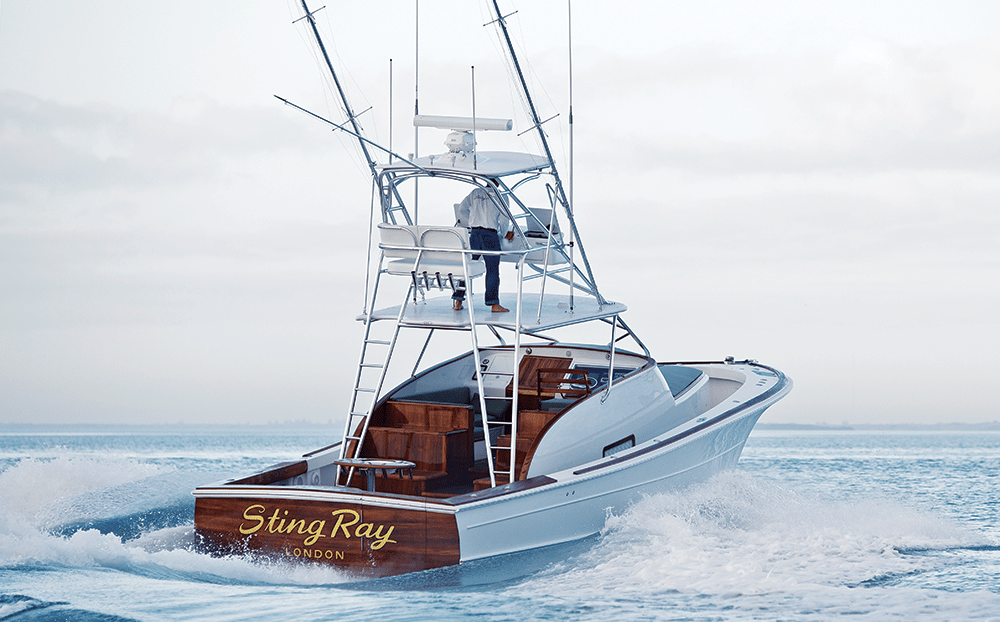
Today’s boat buyers enjoy more options than ever when it comes to fishing-boat designs and layouts — a good thing for those of us who think of boats as an indispensable tool. Likewise, the proliferation of power options adds even another layer of choices for those in the market. As the number of options expands, so has the difficulty in making a final decision. The dilemma created by a bewildering array of choices both fascinates and frustrates those of us who love boats.
In the end, you need to make the decision to go one way or the other, and that old saw about all boats being a compromise rings truer than ever. Most of us opt for a boat that can accomplish the greatest number of tasks well, from range and speed to stay-aboard comfort and, of course, fishability. All boats should come with at least the basic design and tools to allow us to fish efficiently and effectively, or they’re essentially useless — to fishermen, anyway.
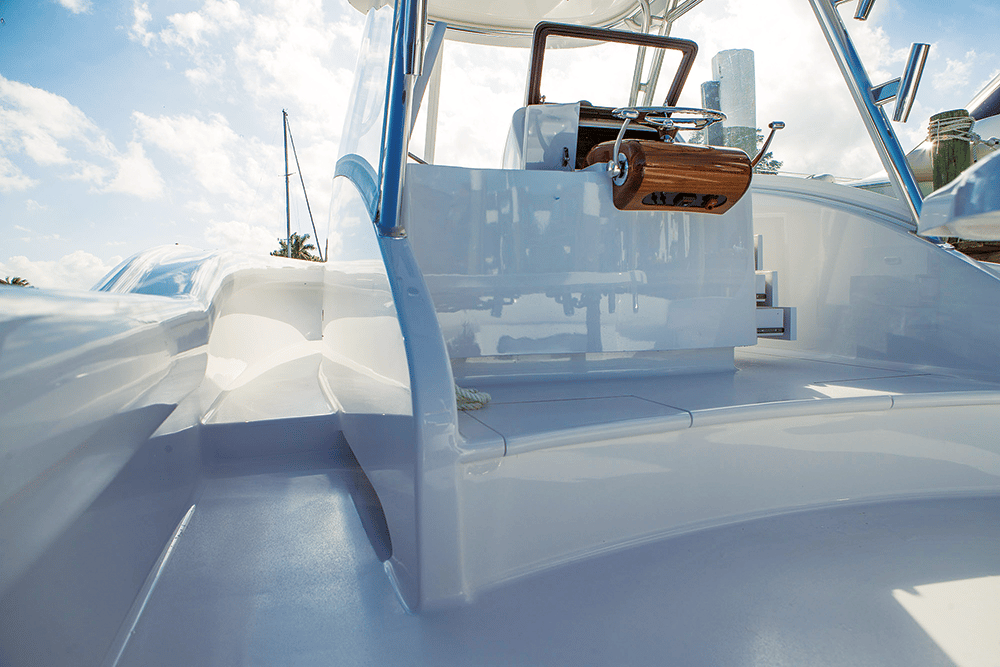
A Simpler Concept
A small but growing number of boat aficionados have chosen a different path, however. They have opted out of the program in which a boat must be all things to all people and instead have embraced a more focused — some could even say radical — direction. These buyers go for the most hardcore fishing design of all: the walkaround-express boat. Walkarounds have been around for years and have never really caught on, but that might be changing.
Boatbuilder Bill Knowles of Stuart, Florida, generally gets credited for being an innovator in walkaround design. He created the concept after experiencing a disaster at sea during the 1950s when he was a member of the Coast Guard. “I saw a 34-foot Trojan flybridge sedan pull up to the dock,” Knowles says, “and the owner went berserk when he discovered his 8-year-old daughter was not on the boat. He was so busy running the boat from the flying bridge, he did not see or hear her over the engine noise when she fell overboard.”
This tragedy spurred Knowles to create a new design in which everyone could be on one level and therefore easier to keep track of. “I sketched my walkaround that night,” he says. “I wanted a boat where I could see everyone onboard. I also wanted a boat I could run and dock by myself. My friends often tried to help operate the boat, but they usually got me in more trouble. I wanted to have a boat on which I could sit at idle, walk around and catch fish.”
Knowles’ basic design eventually caught the attention of famed Palm Beach, Florida, sailfish angler Nick Smith, who commissioned Knowles to build what arguably became the most famous walkaround boat ever crafted: the 36-foot Knowles, Old Reliable. Smith had previously commissioned a single-engine 30-foot Daytona walkaround, which Bobby Sherbert built for him, but he wanted something larger and more seaworthy.
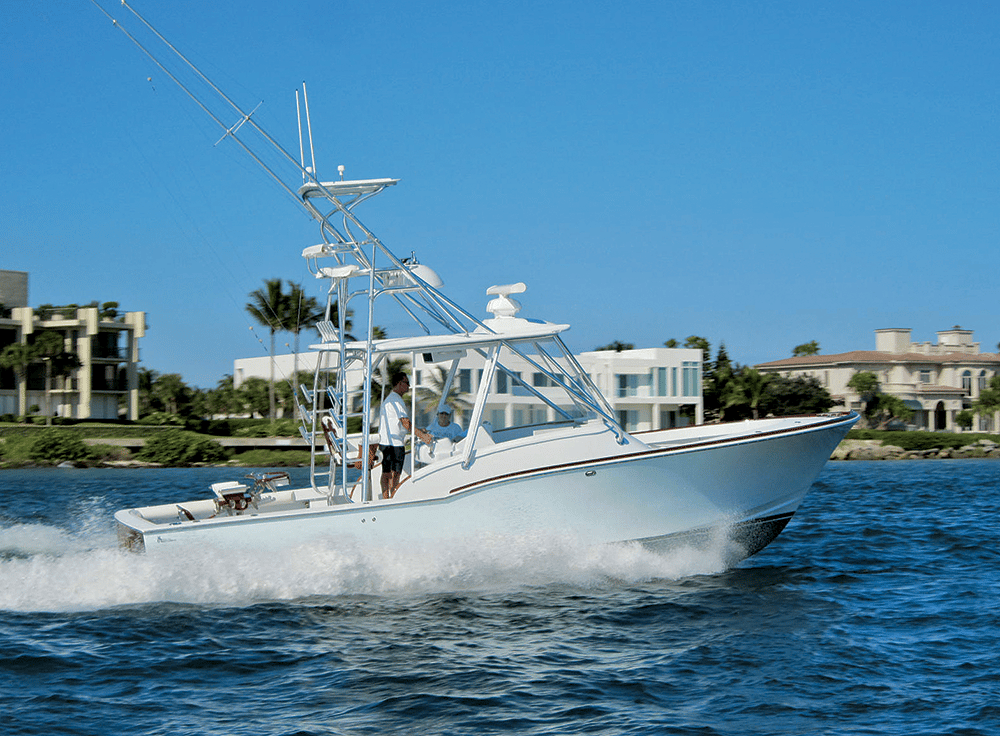
An Evolution in Design
“I had grown up fishing out of old 22-foot Aquasports boats,” says Smith, “but I needed more protection from the elements and a better running surface. The answer was to design a boat with the flybridge deck set down onto the cockpit of a center console. It became obvious that would not work with a boat with only 8 feet of beam, so we had to design our own.” Knowles delivered the 36-foot Old Reliable in 1988.
The boat featured a slightly elevated bridge deck to make room for the engines below. Smith’s specific measurements allowed him to fish alone or with one or two companions. “I wanted to be only one or two steps [away] from the cockpit,” he says, “and still be able to man a rod from the helm. That meant the console needed to be 24 inches forward of the step up to the bridge deck. With a helm pod protruding 6 inches aft, that still gave me 18 inches to work behind the wheel.”
The Knowles version of Old Reliable became famous on the South Florida sailfish circuit, but Smith eventually sold it and moved on to bigger boats that allowed him to travel as well as chase sailfish and marlin on fly gear in the Pacific Ocean. But he always missed the walkaround, so he decided recently to give it another shot.
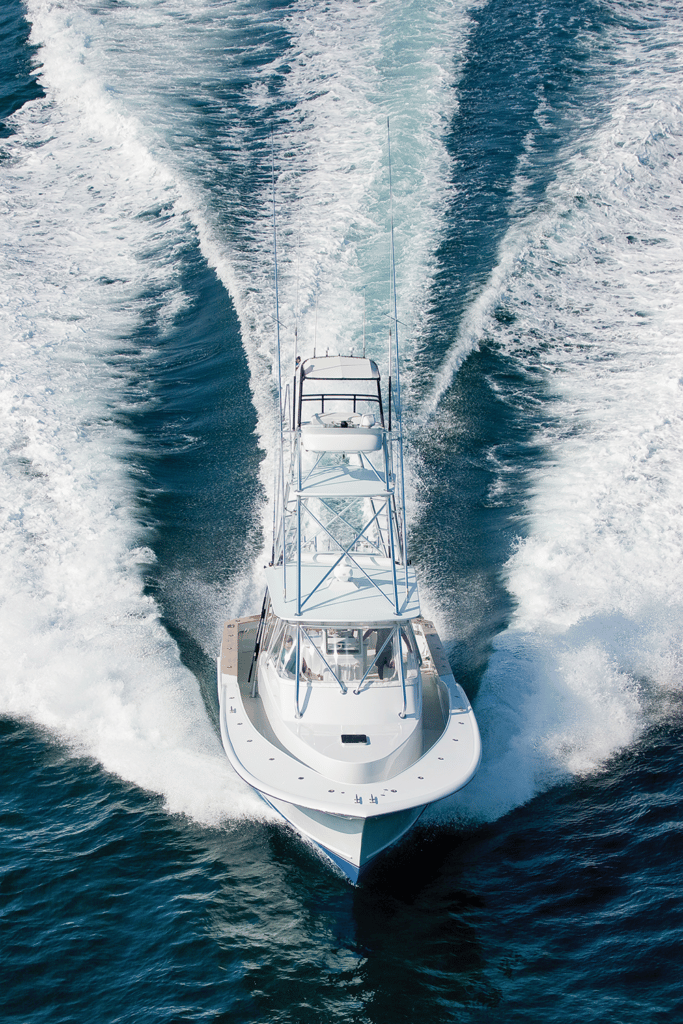
A Classic Reborn
“Three years ago, Nick Smith came to us with the idea to try and perfect the walkaround, again,” says Tim Winters of Winter Custom Yachts. “We studied many of the models being built today and combined that research with his personal fishing knowledge to build what has turned out to be a fantastic fishing platform.”
The new boat was an evolution in design, taking into account what each of the principals had learned along the way.
“The walkaround is not a new concept, and many have been built,” says Winters. “This style of boat has many attributes that make it ideal for any size. Obviously, the walkaround gives you 360-degree fishing, allowing you to handle multiple hookups more effectively. But it gives you more versatility when drifting while kite-fishing or bottomfishing and adds a large safety factor for all forward activities that we typically do on sport-fishing boats. Whether you are coming into the dock or deploying your anchor, you are safely working within the boat rather than on top of it.”
“We are currently building two new 38-foot walkarounds,” says Winters.
“One will be a tender to a mothership operation, and the other will be an all-in-one boat, like Nick’s. They are both powered by twin 550-hp Cummins engines with a single generator, a Seakeeper Gyro and ice machines. They will cruise in the mid 30-knot range with a top in the low 40s. Each boat boasts a forward, queen-size bed, A/C, galley, full head and shower.”
Given the possibilities brought on by modern design, maybe you can get hardcore fishing abilities along with creature comforts after all.
Smith’s latest Old Reliable is a 33-footer with a single 480-hp Cummins diesel. It cruises at 30 knots while burning 16 gph and was designed for him to fish solo, flying both a bow and stern kite while sailfishing in south Florida. He decided to forgo a helm chair so that he has better access to the cockpit; it also allows him to fight a fish while standing at the helm running the boat.
Common Traits
All well-designed walkaround boats offer ease of passage from the stern to bow, essentially providing the same 360-degree fishing capabilities of smaller outboard-powered center consoles. But you do pay a price in terms of accommodations and belowdecks space. Given the limitation imposed by beam width, that plentiful walkaround space on deck must come from somewhere, and it almost always comes at the expense of cabin space — there’s really no other alternative.
“I was never a fan of walkarounds,” says Jim Turner, president of Release Boatworks. “I fished a lot on walkaround boats owned by friends, and I believe most of them had the same shortcoming: no seating.”
Nevertheless, Release just finished its first 34-foot walkaround, having already built four 46-foot walkarounds and four 43-footers of the same design. All of the 46-footers have been pod boats. The 43s have been two straight drives with tunnels, one pod boat (a tender for a 155-foot Delta) and an outboard boat. He has jumped into the walkaround market in a major way, so something obviously must have swayed Turner’s opinion.
“The excellent fishability of this style of boat goes without saying,” Turner says, “so I felt the two most important design elements were seating and a single-level deck. A wide walkaround alley is important, as well. If you can go forward with your hips square to the bow, it’s much faster and safer than doing the side-step shuffle. At boat shows, we’ve carried up to 23 passengers on sea trials. What I didn’t expect was this boat is actually a great family boat. I have three daughters, and sending one to the bow to get the dock lines is safe and stress free. And when they bring their friends onboard, one group is at the bow, one in the cockpit and one on the bridge. In other words, it lives like a much bigger boat.”
Turner adds, “From a fishing perspective, a walkaround can do it all. Anchoring for yellowtail snapper is effortless, for example. Trolling is where you have to remind yourself it’s a walkaround. You don’t have to fish like you’re in a flybridge boat. The first angler to hook up moves to the bow. All other lines are still in the water, fishing. Multiple hookups are much easier. South Florida kite-fishing from a walkaround is like having an unfair advantage. We had a 20-fish day this spring with a group that had never kite-fished. Without the walkaround, it would have been pure chaos.”
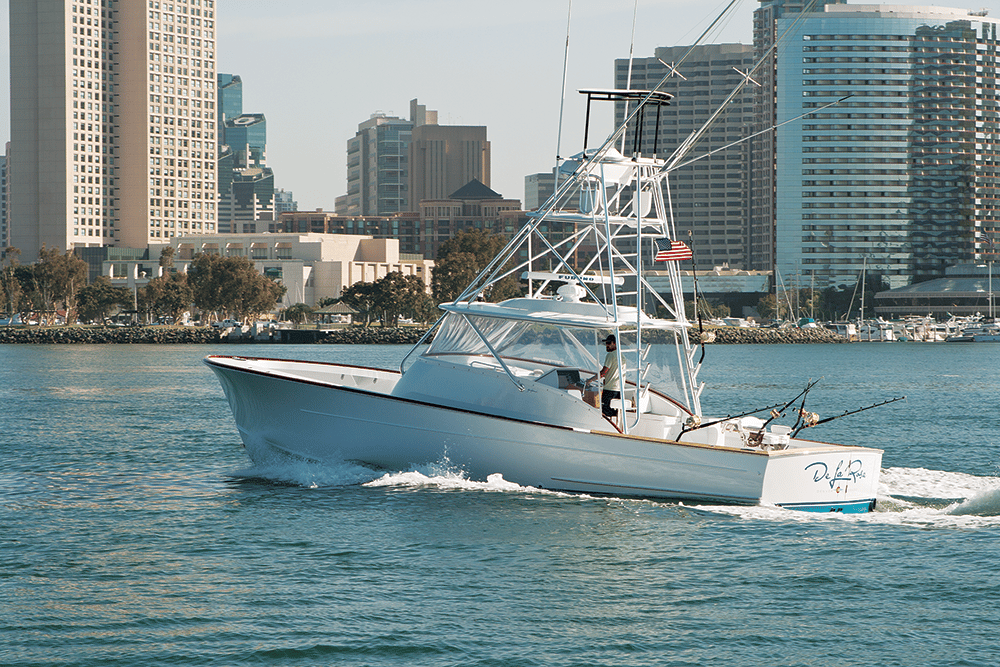
Leaders in the Field
L&H Boats of Stuart, Florida, might be the company most associated with the walkaround design these days — that’s all the company builds. “Our goal never was to become a large company,” says Glenn Muller, L&H president. “We wanted the company to grow to a natural level, and we were satisfied to build a boat or two a year, but we’re about to complete our 32nd walkaround.” That’s far more than any other custom yard that we know of.
Quite a few boatbuilders joined the walkaround party to one degree or another as well. “We’ve built three 42-foot walkarounds and four in other sizes,” says Mike Matlack, president of Gamefisherman. “Walkarounds are very specific-use boats. Like a rifle, there’s only one thing you do with it. All of our walkarounds have level cockpit decks with no steps to trip over. When fishing gets real good, they can become run arounds! Also, unlike a lot of other builders who are trying to get roomy interiors below forward under a trunk cabin, we create a large forward cockpit. When you hook up and start backing on a fish, other anglers simply walk forward and keep on trolling for the multiple hookups.”
Even the builders of some of the largest and fastest sport-fishers on the market have found themselves dabbling in the walkaround arena. “We designed the ACY42 Independence to be the ultimate walkaround boat,” says Dominick LaCombe, president of American Custom Yachts. “It was built for a longtime customer who was looking for a one-of-a-kind, low-maintenance fishing machine that could accommodate the many different fishing techniques he had mastered over the years. Many of the unique features found on the boat were gleaned from the owner’s personal fishing experiences while fly-fishing, live-baiting, kite-fishing and deep-dropping. As a bonus, the walkaround design doubles as a great family vessel, allowing all ages to enjoy the action whether fishing, cruising or relaxing at the sand bar.”
“We have built one walkaround boat, which is called Orion,” says Chip King, president of Shearline Boatworks. “She is 43 feet long and lives in West Palm Beach, Florida. The 360-degree fishability is certainly the most obvious benefit to the walkaround layout, but it also is also great for two guys to operate by themselves since everything is so accessible. We are currently working with a couple who enjoy fishing and also taking their boat cruising and out to dinner. With clear access to the bow, a husband and wife can pull up to a dock and get tied up much more easily than on an express or traditional sport-fisherman. The same goes for anchoring, whether on a wreck to fish or a favorite lunch spot to picnic. It’s a two-person boat. It’s a great boat for kite-fishing with live bait for sailfish, which is something the owner of Orion enjoys doing as well.”
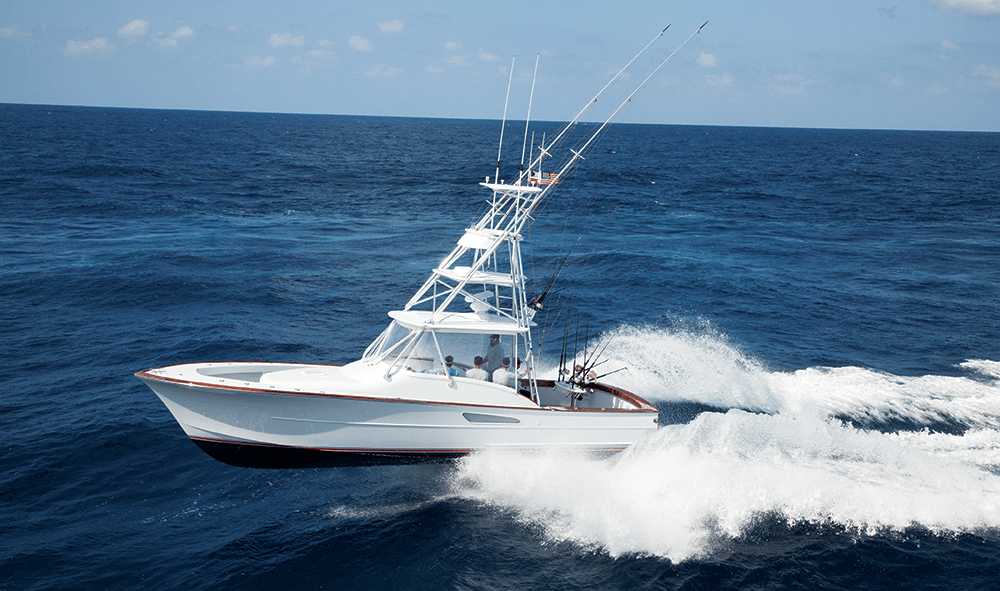
A Step Up?
It’s a given that the 360-degree fishing aspect of these boats is the most obvious advantage, but what else must one consider when looking at walkarounds? The transition to the bow generates some debate among both builders and buyers: Should you install a step, or should you have a level deck from the cockpit forward? It’s largely a matter of personal opinion. While most anglers agree that a level deck provides the most simplicity, it sometimes becomes hard to pull off on boats with a considerable amount of sheer going forward. A pronounced sheer requires a steep incline from stern to bow on some boats, so builders opt for a step.
Smith believes the depth around the gunwales also becomes a critical factor in how well a boat will fish. “You need a maximum depth of around 24 inches so you can adequately stabilize yourself while fighting a fish,” Smith says. “If the deck doesn’t rise to meet the sheer forward, fishing from the bow becomes compromised. Most boats need a step to do that.”
Another ongoing debate centers on whether to build with one engine or two. “Fish are attracted to the boat by the sound,” says Knowles. “Like any other animal, they come up from behind the sound to look for food. A single-engine boat will raise more fish than a twin. When the wave action causes the twin engines to go out of sync, I believe it creates a sympathetic vibration that scares fish. I built a 34-foot single-engine walkaround for my personal use. It is quiet, and the Cummins diesel produces a low-frequency sound that fish are not afraid of. I see most of my fish on the flat lines.”
Complex to Produce
It should be noted that walkaround boats can be expensive to produce, given their extremely custom nature and singularity of purpose. “We only ever built one walkaround, named Wish List,” says Mark Willis of Willis Marine. “They are time consuming to build and therefore expensive. As a one-off with no tooling, everything on our boat was hand built. We could produce a larger vessel for almost the same dollars. The magic that these vessels possess is the fact that they are easier to run, fish, and maintain than a larger flybridge vessel. I think the anglers get a real sense of being in the center of the action. I would not be opposed to building another walkaround provided the owner understands the challenges going into such a build. It has to be exactly what they want and not a price-driven goal.”
The popularity of the walkaround seems to be on the increase, but the design still accounts for a small percentage of boats sold overall. “I only built four walkarounds in my career because many boat buyers don’t want to seriously fish,” says Knowles. “They want a floating condo that their wife and friends can party on.” That might be true, but if unsurpassed fishing versatility intrigues you more than the notion of a plush berth, perhaps a walkaround boat is in your future.

